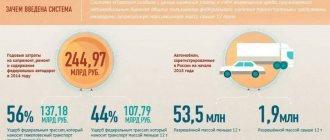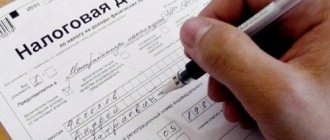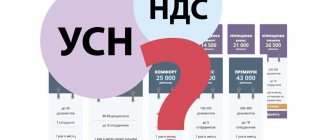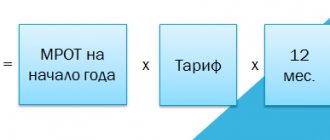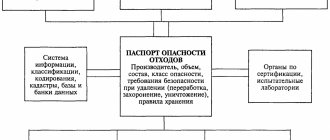System "Plato""(an abbreviation for the words "payment per ton") is an automatic system of collecting fees from freight vehicles (vehicles) weighing over 12 tons, moving on public roads in the Russian Federation, to compensate for the damage that such vehicles cause to the road coating. The system also allows you to automatically collect data on vehicle routes for subsequent storage and processing (for example, for the purpose of compiling detailed statistics, monitoring traffic or for billing for the actual distance traveled, as well as for forming an evidence base for administrative offenses).
History of creation
One of the key prerequisites for the emergence of such a system is the condition of roads in the Russian Federation. The quality of the surface of federal and regional highways is deteriorating every year, and restoration work is carried out only at the expense of tax revenues (from the budget).
The most logical solutions to this situation:
- The introduction of an additional, actually targeted, tax that would be levied on equipment that causes the greatest damage to the coating, that is, on freight transport.
- Transition to toll roads.
In reality, both concepts were adopted. After repair work, certain sections of the highways have already become tollable, and the “Platon” system has been developed for commercial heavy transport, which implies a unified tariff system.
In the summer of 2013, the Government adopted Resolution No. 504, which proposed charging heavy vehicles (permitted maximum weight over 12 tons) - 3.5 rubles per km of track.
As part of the implementation of the resolution, in 2014 Rosavtodor announced a competition to select a performer. A Russian one was chosen for the role of the performer (Order of the Government of the Russian Federation No. 1662-r of 2014).
Investments in creating the system amounted to about 30 billion rubles. (most of the amount was issued on credit by Gazprombank).
The system was launched at the end of 2015.
During the first 6 months of operation, Platon collected about 8 billion rubles. payments. Almost 720 thousand vehicles and more than 248 thousand cargo carriers (including logistics companies) were registered in the system.
In 2021, amendments to the Code of Administrative Offenses came into force, which allowed Rostransnadzor to automatically make decisions on fines for owners of 12-ton trucks. The millionth truck was registered in the Platon system.
With the funds received, 700 km of roads and 31 bridges were repaired in 2021.
From the launch of the system until February 2021, Platon transferred more than 97 billion rubles to the state budget.
How does the Plato system work?
The system was introduced throughout the country in stages, and today it is rare that a truck driver does not know how it works. Currently, heavy truck drivers have two payment options: prepaid and postpaid. The amount is charged directly for the distance traveled by the car, in a specific amount for each kilometer of travel. Payment is possible both using one-time cards and by charging a fee through the on-board device.
The system was launched with a set fee of 3.73 rubles for each kilometer. Today, preferential tariffs are in effect (1.53 rubles/km), adopted in February 2021. This year promises to be difficult for truckers and other owners of cars weighing more than 12 tons. Tariffs will rise again to their original levels, and perhaps even higher.
The operation of the system is based on the coordinated interaction of all substructures and devices. According to the law, every driver of a truck weighing more than 12 tons must register on the official website of the project and independently pay for travel on “toll” roads.
Tracking the movement of cars and monitoring payment is carried out through online surveillance via GPS and GLONASS satellites.
Directly on the roads, the passage of heavy trucks is controlled using control frames and mobile systems. Mobile control points are cars marked with the system logo, usually Lada Largus models. The revealed fact of unpaid driving threatens the owner of the car with a fine.
Composition/structure of the Plato system
On-board devices . They are installed directly on the car and allow you to track the location and route traveled using geopositioning systems (GLONASS/GPS). Location data is transmitted via the mobile network.
Stationary control devices . Special frames and other technical solutions installed at control points directly on the tracks.
Mobile control service . The control is carried out by representatives of the operator in vehicles specially equipped for this purpose. Unlike stationary control points, they can quickly change their location.
Information system and data processing centers (DPCs). The hardware and software part of the system is responsible for automating calculations and tracking.
User information support centers and call center . Ensure resolution of controversial issues, processing of incoming requests and timely informing of users. At the information centers you can sign an agreement and receive on-board devices, pay your bill, and register in the system.
Website and mobile applications . Designed primarily for registering new users, gaining access to your personal account and issuing route cards. In addition, they provide other system capabilities (timely notification of tariffs, posting of official documents, etc.).
Using the Plato system
To become a member of the service, the truck owner must create an account in the Toll System Register. The carrier is obliged to provide complete information and reliable documentation; they will be included in the operator’s unified database.
How to register on the platform
There are three ways to create an Account to add your own personal data and car information to the Register.
1. Website
Leave your application on your computer or smartphone without leaving your home; you will need a passport and PTS. Fill out all the lines in the form, enter your cell phone number and email address for communication. For a legal entity and individual entrepreneur, the package of documents includes a certificate from the tax authorities and a certificate of registration of activities. After confirmation, you will be able to work in your personal account, and you will also be sent a digital personal identification code for service in the terminal or 24-hour contact center.
2. User information support center
When visiting offline, you will fill out two applications - for the owner of the vehicle and for the car. Citizens must confirm their identity and present registration at their place of residence or stay, as well as copies of documents for the car. For legal entities and individual entrepreneurs, you will additionally need a certificate of registration with the tax authorities, a permit for legal activity or individual entrepreneurship. Successful verification will allow you to work in your personal account and receive service and information assistance remotely.
3. Self-service terminal
You don’t have to use the On-Board Unit, but pay for each trip separately using a one-time Route Card. It is registered independently through the terminal, the procedure is intuitive, the digital menu will prompt the algorithm step by step.
You can find out the address of the information support center or terminal closest to you on the official Platon website in the “Service Centers” menu. Search works by localities.
Personal account of the Platon system
From the moment you submit your data, you must wait up to 20 days, this is how long verification takes. Successful registration gives access to your personal account. It provides the site visitor with the opportunity to perform a number of procedures online:
- register or delete from the vehicle database;
- change cell phone number and e-mail address;
- replenish the Account and compensate for damages using a bank card;
- activate low balance alerts;
- control the account status and balance changes;
- work with the Route Map – fill out and cancel, pay, clarify information;
- receive information support from the operator.
Also, after verification, the options for your personal account in the Platon system will open in a special mobile application. It can be downloaded for free through the standard application store for iOS, Windows, and Android cell phones.
If you receive a notification that “user is not verified,” check that you have filled out the form correctly. Contact the call center staff for advice.
Principle of operation
Drivers or vehicle owners can choose one of the payment schemes:
- Advance . Applies to all new users and users who do not meet the requirements for postpaid registration.
- With postpayment (delay no later than the end of the next calendar month). Registration is carried out only upon a separate application from the user if the following requirements are met: more than 2 months have passed since the registration of the vehicle in the system;
- the owner resides in the Russian Federation (legal entities must be registered in the Russian Federation);
- The vehicle is equipped with an on-board unit;
- there have been no late payments in the last 6 months;
- there are no arrears in paying fines due to driving without payment.
Vehicles weighing over 12 tons can only move on public roads after (any of the options to choose from):
- preparation of a route map;
- installation and activation of the on-board device.
The algorithm for interacting with the Platon system when preparing a route map will look like this:
- The user registers in the system (this can be done on the website, through self-service terminals or at regional information centers).
- Performs authorization in your personal account and enters data about the vehicle.
- Draws up a one-time route map.
- Makes payment using one of the available methods.
- The vehicle can begin to move.
- The route is monitored using stationary and/or mobile control systems.
On-board devices are most convenient when making regular flights, since they do not require you to prepare route sheets for each trip. Algorithm for interaction with the system in the presence of an on-board unit (OU):
- Registration in the system.
- Authorization in your personal account, entering vehicle data.
- Signing an agreement for the free use of BU at the regional Information Support Center (you will need to provide an advising package of documents; it will be different for individuals and legal entities, citizens of the Russian Federation and foreign citizens).
- Receiving a device (it is tied to a specific vehicle and cannot be used on others).
- Installation and connection of the control unit to the power supply (on-board network of the car).
- Topping up a client's account.
- The vehicle moves on the roads, all write-offs are calculated automatically.
- The main means of control is the on-board device; mobile and stationary control systems are used as additional ones.
What to do to avoid paying fines for Plato
To avoid a fine, the owner of the truck has two options - issue a route card before each trip or install an on-board device and regularly top up the balance.
Prepare a route map before leaving. To do this, go to your Plato personal account, open the “Route maps” section, create a new map - enter the date, route points and pay for the fare.
Install the on-board unit. Order the device on the Platon website, attach it to your windshield and plug it into the cigarette lighter.
Top up your balance before leaving. Make sure there are enough funds in your account to pay for your travel.
Monitor the health of the device. Pay attention to the indicators: satellite and mobile communications, power.
Tariffs and conditions
According to Government Decree No. 504 of 2013 (even before the launch of the system), the base rate was set at 3.5 rubles/km.
But by the time of launch, the rate had been revised - 3.73 rubles/km (RF Government Decree No. 474 of 2015). And subsequently it did not change anymore.
However, the real rate for the period from 02/01/2020 to 01/31/2021 is significantly lower - 2.20 rubles/km . This is due to the application of a correction factor of 0.51, which depends on the consumer price index (Decree No. 504 as amended in 2019, according to Decree No. 843).
The specified fee is not charged from:
- special vehicles designed for transporting weapons and military equipment;
- vehicles used for police, ambulance, fire, military traffic inspection and emergency services activities;
- vehicles intended for the transport of passengers (except for vans).
Basis: Federal Law No. 257 of 2007 in its current edition.
Sanctions/fines
First violation - 5000 rubles. (applicable to vehicle owners, for foreign carriers - to drivers).
Repeated violation - 10,000 rubles.
The basis is Article 12.21.3 of the Code of Administrative Offenses of the Russian Federation.
Violation means:
- Driving with a switched off/faulty control unit without obtaining a road map.
- Movement in the absence of funds in the account necessary to write off the payment (except for the situation with permitted postpayment).
- If the vehicle does not have a control unit assigned to it, the vehicle is driven without a road map.
- If you have a road map, driving at a date or time, as well as along a route that does not correspond to those indicated on the map.
Payment / top-up methods
- In cash through payment terminals in partner networks (Euroset, MKB, Eleksnet, QIWI, Sberbank, Energotranspbank).
- By bank transfer using the specified details.
- From a bank or fuel card account on the system website or mobile application.
- By bank card at Service Centers or self-service terminals.
- From your phone account through the MOBI.Money service.
- Using other online services (Sberbank Online, QIWI wallet, Elexnet Online).

